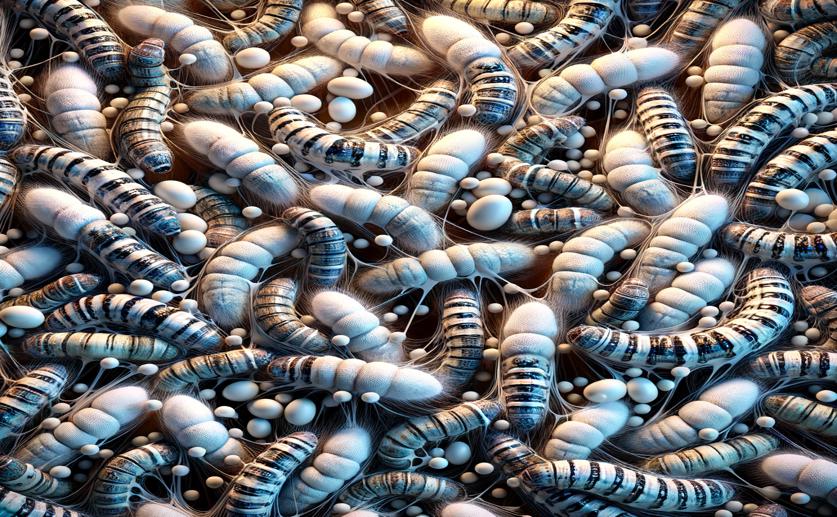
Piezo Protein Needed for Sperm Production in Silkworms
Jim Crocker
21st May, 2024

Image Source: Natural Science News, 2024
Key Findings
- Researchers at Jiangsu University of Science and Technology studied the roles of two types of silkworm sperm: nucleate fertile eupyrene sperm and anucleate unfertile apyrene sperm
- Eupyrene sperm can fertilize eggs, while apyrene sperm, despite being infertile, help eupyrene sperm reach the site of fertilization
- The study found that the Piezo gene is crucial for the proper development and function of eupyrene sperm, affecting male fertility in silkworms
References
Main Study
1) The mechanoreceptor Piezo is required for spermatogenesis in Bombyx mori
Published 20th May, 2024
https://doi.org/10.1186/s12915-024-01916-y
Related Studies
2) Piezo1 and Piezo2 are essential components of distinct mechanically activated cation channels.
3) Piezo1, a mechanically activated ion channel, is required for vascular development in mice.
4) PIEZO ion channel is required for root mechanotransduction in Arabidopsis thaliana.



 14th May, 2024 | Jenn Hoskins
14th May, 2024 | Jenn Hoskins